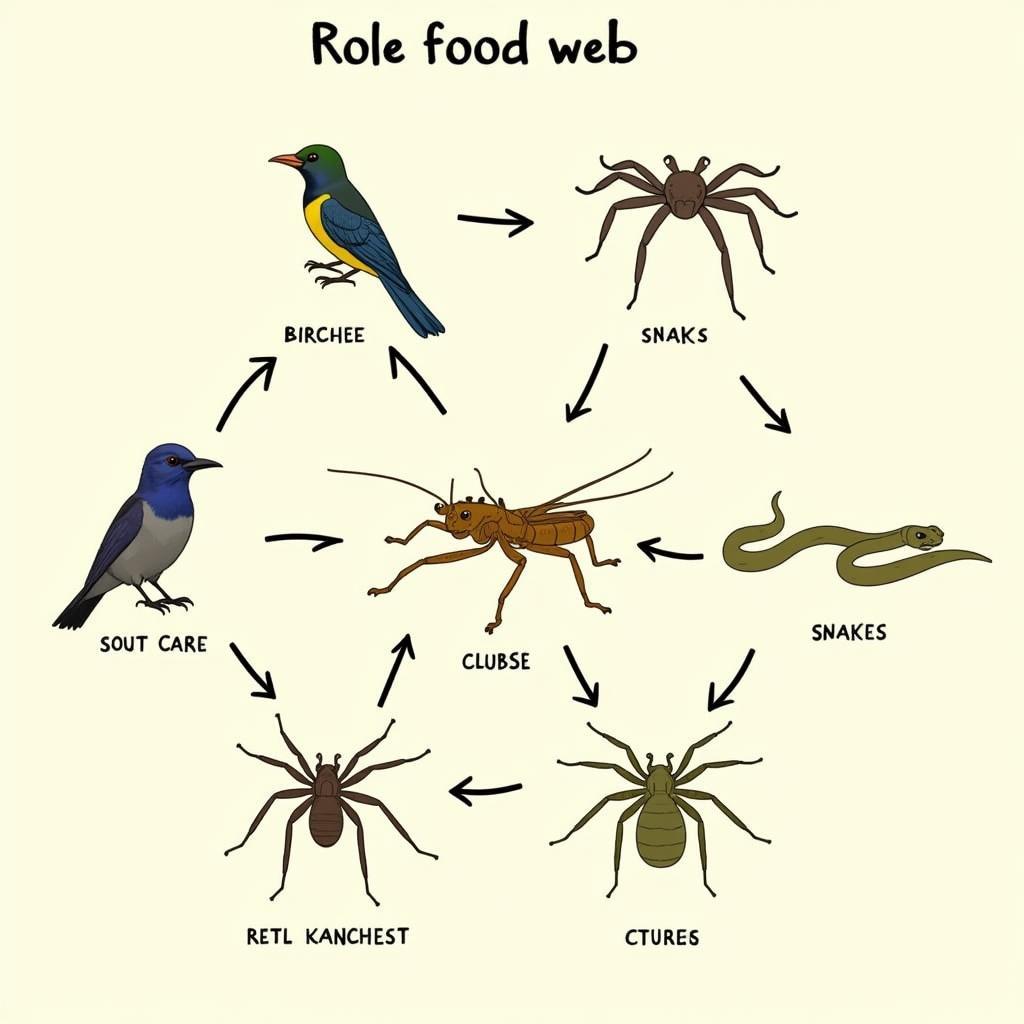Crickets Dying: A Concerning Trend and What it Means
October 14, 2024Crickets Dying in large numbers might seem like a minor inconvenience, but this phenomenon is a significant indicator of potential environmental imbalances. While crickets themselves might not be the most charismatic creatures, their role in the ecosystem is crucial, and their decline could have ripple effects on other species and the environment as a whole.
The Importance of Crickets in the Ecosystem
Crickets are often overlooked, yet they play a vital role in maintaining a healthy ecosystem. They are a valuable food source for a wide range of animals, including birds, reptiles, amphibians, and even some mammals.
 Crickets as a food source
Crickets as a food source
Furthermore, crickets contribute to nutrient cycling by breaking down organic matter, aiding in decomposition, and enriching the soil. This process is essential for plant growth and overall ecosystem health.
Factors Contributing to Cricket Mortality
Understanding why crickets are dying is crucial to addressing this issue. Several factors can contribute to their decline, including:
- Pesticide Use: The widespread use of pesticides in agriculture and residential areas can have devastating effects on insect populations, including crickets. Pesticides can kill crickets directly or contaminate their food sources, leading to their demise.
- Habitat Loss: As humans continue to expand their footprint on the planet, natural habitats are being destroyed or fragmented, leaving crickets with fewer places to live and reproduce.
- Climate Change: Changes in temperature and rainfall patterns can disrupt cricket life cycles, making it difficult for them to survive and reproduce.
- Disease: Just like any other living organism, crickets are susceptible to diseases. Outbreaks of fungal or viral infections can decimate cricket populations.
The Impact of Cricket Decline
The decline in cricket populations can have far-reaching consequences for the environment and other species.
- Disruption of Food Webs: As crickets are a primary food source for many animals, their decline can create a domino effect, impacting the populations of their predators.
- Reduced Soil Health: Crickets play a vital role in decomposition and nutrient cycling. Their decline can lead to slower decomposition rates and poorer soil quality, impacting plant growth and overall ecosystem health.
 The life cycle of a cricket and its environmental impact
The life cycle of a cricket and its environmental impact
What Can Be Done?
Addressing the issue of cricket mortality requires a multi-pronged approach:
- Reducing Pesticide Use: Opting for organic gardening practices and advocating for responsible pesticide use can help protect cricket populations.
- Habitat Conservation and Restoration: Protecting existing natural habitats and restoring degraded areas can provide crickets with the space they need to thrive.
- Climate Change Mitigation: Supporting policies and practices that address climate change can help mitigate its impact on crickets and other insects.
- Disease Monitoring and Control: Research and monitoring programs can help track and manage disease outbreaks in cricket populations.
Conclusion
The seemingly insignificant issue of crickets dying is a stark reminder of the interconnectedness of all living things. It underscores the importance of understanding and protecting even the smallest creatures in our environment. By taking steps to address the factors contributing to cricket mortality, we can help ensure the health and balance of our ecosystems for generations to come.
FAQs
1. Are all cricket species declining?
While some cricket species are thriving, others are experiencing significant declines due to the factors mentioned above.
2. Can crickets recover from population declines?
Yes, cricket populations can rebound if the threats they face are addressed effectively.
3. What can I do to help?
You can make a difference by reducing pesticide use, supporting habitat conservation efforts, and spreading awareness about the importance of crickets.
4. Where can I learn more about crickets and their conservation?
Numerous resources are available online and through conservation organizations that provide valuable information about crickets and their role in the ecosystem.
5. Are there any alternatives to pesticides for controlling pests?
Yes, many natural and organic pest control methods are available that are less harmful to crickets and other beneficial insects.
For any inquiries or assistance, please contact us at:
Phone Number: 0915117113
Email: [email protected]
Address: To 3 Kp Binh An, Phu Thuong, Viet Nam, Binh Phuoc 830000, Viet Nam.
Our dedicated customer support team is available 24/7 to assist you.